[Video] The 9 Hallmarks of Aging, Episode 9, Inflammation [FINAL] – with Dr. Guilhem Velvé Casquillas
Finally, we will discuss here a ninth identified hallmark of aging: intercellular signalling problems and inflammation.
Inflammation: definition
When we talk about inflammation, we must take into account the function of all the cells in our body and the signals they exchange. Each cell is capable, depending on the stress to which it is subjected, whether internal or external, of synthesizing small molecules called cytokines that regulate the inflammatory response. Among the most well-known, you may be familiar with interleukins or TNFalpha: these cytokines are capable of binding to receptors on the surface of our cells and triggering a specific response. This is the case when the NF-κapaB pathway is activated, a transcription factor that will attach itself to our DNA and trigger the expression of several genes related to inflammation.
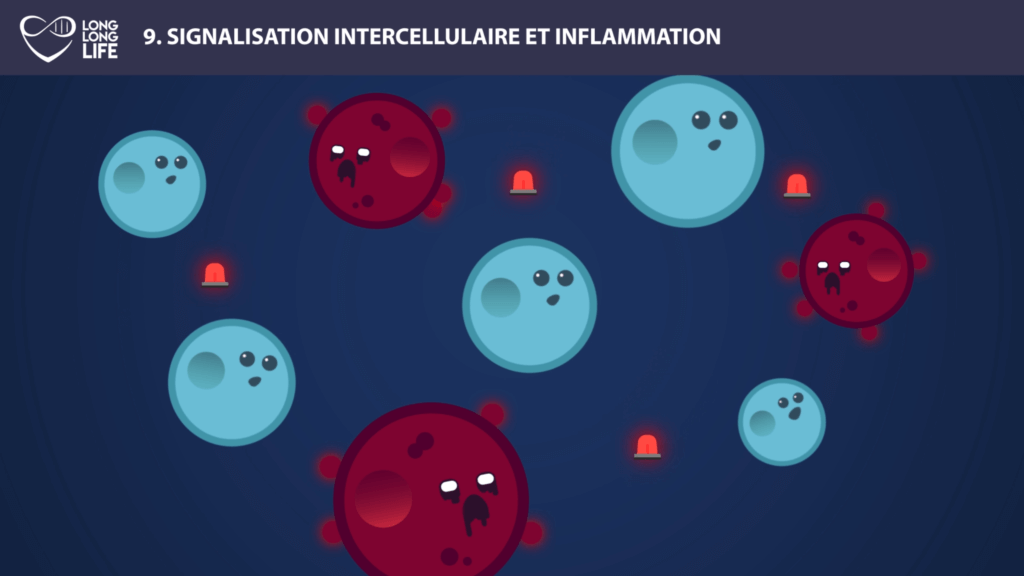
The stimulation of cytokines therefore leads to a vicious circle of permanent activation of inflammation, let us note that aging likes vicious circles… Fortunately, there are also anti-inflammatory molecules that help to regulate this phenomenon. With age, however, in addition to increased inflammation, these regulations are less and less effective and this is how we see the arrival of “inflammation”, a pro-inflammatory state observed in mammals as they age.
Inflammation + aging = inflammaging
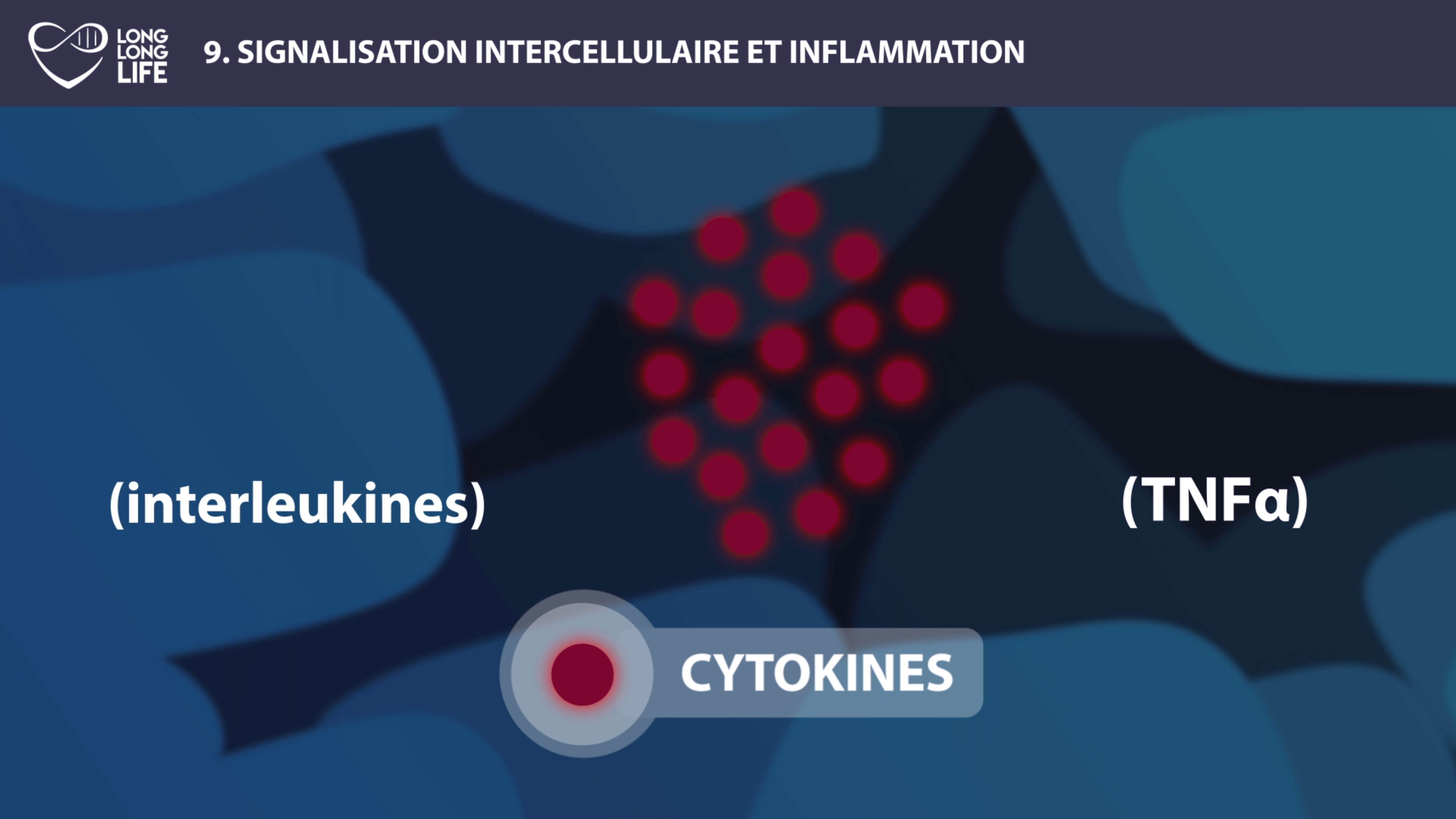
Multiple causes are investigated to explain the inflammation, including: the accumulation of lesions in tissues, which generates pro-inflammatory effects over time, or the secretion of pro-inflammatory cytokines by senescent cells, or a failing immune system that fails to fight pathogens effectively, or an accumulation of damaged proteins that would lead to an inflammatory reaction, or a change in hormone levels that regulate cytokine production… For now, the potential causes are many and, unfortunately, not all are well understood.
In any case, it has been proven that the inhibition of NF-κapaB, discussed earlier, leads to tissue rejuvenation and prevents advanced aging characteristics in different mouse models.
Inflammation and sirtuins
Sirtuins, specialized enzymes known to play a role in aging (discussed above), may also influence inflammation. For example, increasing the activity of SIRTIUNE-1, 2 or 6 would reduce the progression of many inflammatory diseases, because these enzymes inhibit the activity of NF-κapaB on its target genes.
Once again, age-related inflammation can be interpreted as a defence mechanism that eventually becomes harmful over time. Low levels of inflammatory response would support tissue repair and regeneration through activation of the immune system; however, higher levels could aggravate lesions.
Transfusions to reduce inflammation
In 2014, scientists demonstrated that young blood could rejuvenate old tissues, including the brain in mice, hence the intergenerational transfusion business emerging in the USA. This may be of interest, but there is no evidence that a few transfusions will allow people to live longer, particularly because these experiments on mice were performed by linking the blood system of a young mouse to that of an older mouse. It is therefore possible that it is also because of the filtering of blood in the organs of the young mouse that a rejuvenation of the older mice has been observed. For the moment, studies on paid human volunteers are underway in California by Ambrosia. Personally, I doubt that a series of transfusions could significantly rejuvenate someone, to test this hypothesis, I think a preliminary step would be to make daily transfusions between two cohorts of young and old mice without directly connecting their blood system this time.
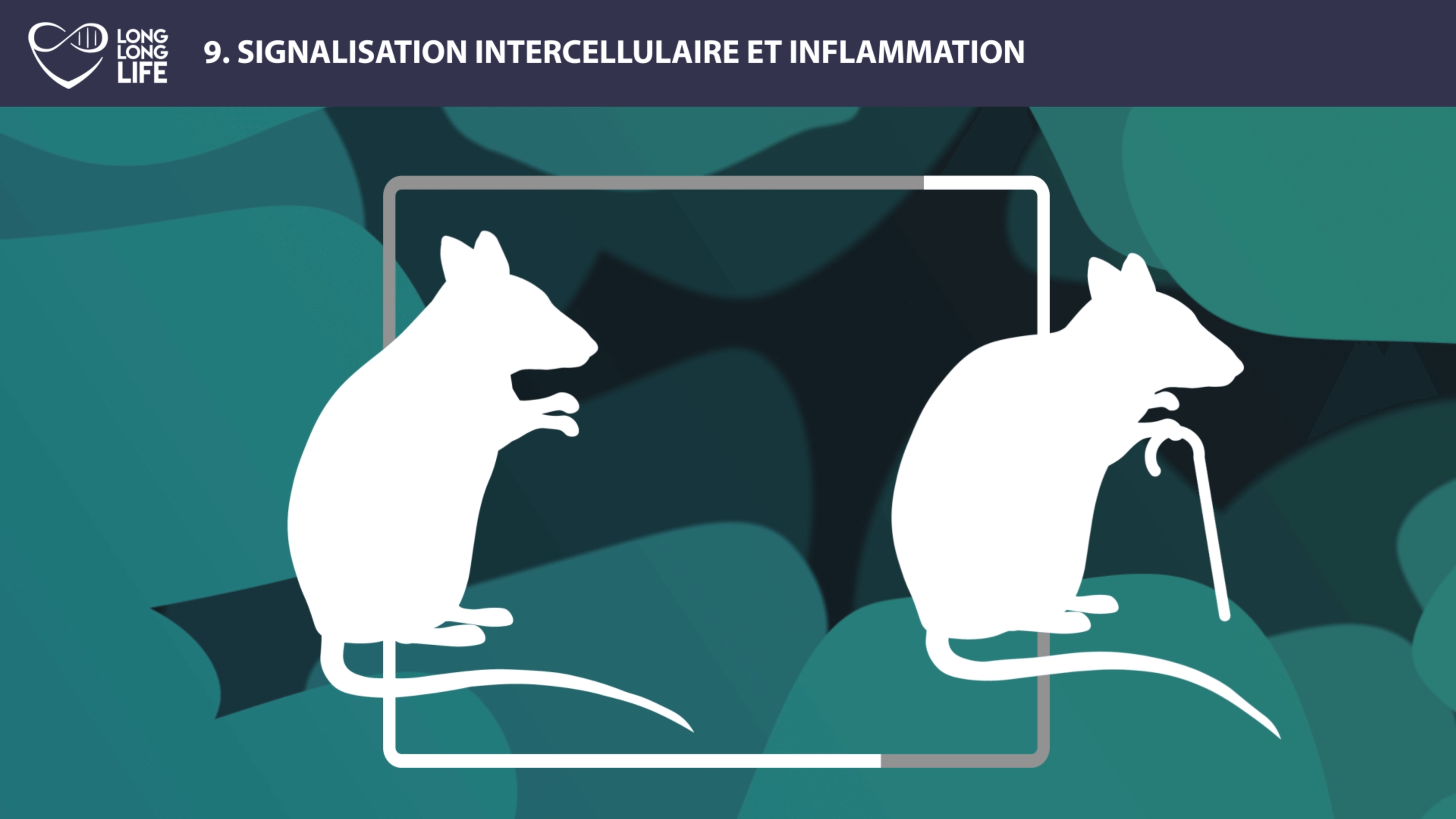
What is interesting for us here is that it is now proven that there are factors in mouse intercellular communication, via blood here, that can control our lifespan and health. Further study of these factors would allow us to identify them and perhaps one day control their concentration in the blood of patients by conventional drug methods that would ideally not involve daily infusions.
Conclusion : primary causes, antagonistes, and secondary causes
To conclude, by schematizing, we could, in the current state of our knowledge, classify the nine causes of aging of which we have spoken into 3 main sub-sections:
First, the primary causes of aging, which would be genetic mutations, telomere shortening, epigenetic alterations and poor protein folding.
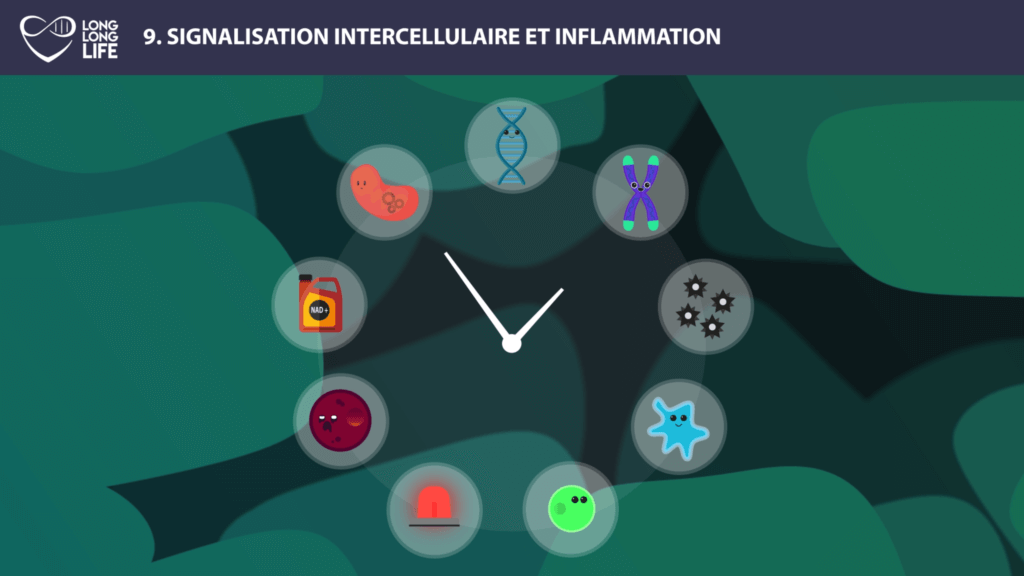
Then we find the antagonists of aging, those mechanisms that were initially supposed to protect us, but which eventually become harmful: i. e. the deregulation of the nutrient detection system, mitochondrial dysfunctions and cell senescence.
And finally, the secondary causes of aging that would result from the first two and amplify its effect. We are talking about the depletion of stem cells and the inflammation due to failure of intercellular communication.
Research in the field of aging has advanced rapidly in recent years, and it is likely that some of the things we think we understand today will turn out to be wrong a decade from now.
Research against ageing remains a very complex scientific field, because most of the phenomena we have discussed remain intimately linked with each other, which does not facilitate the unravelling necessary for a detailed understanding of what is really happening in our bodies.
Dr Guilhem Velvé Casquillas

Author/Reviewer
Auteur/Relecteur
Physics PhD, CEO NBIC Valley, CEO Long Long Life, CEO Elvesys Microfluidic Innovation Center
More about the Long Long Life team
Docteur en physique, CEO NBIC Valley, CEO Long Long Life, CEO Elvesys Microfluidic Innovation Center
En savoir plus sur l’équipe de Long Long Life


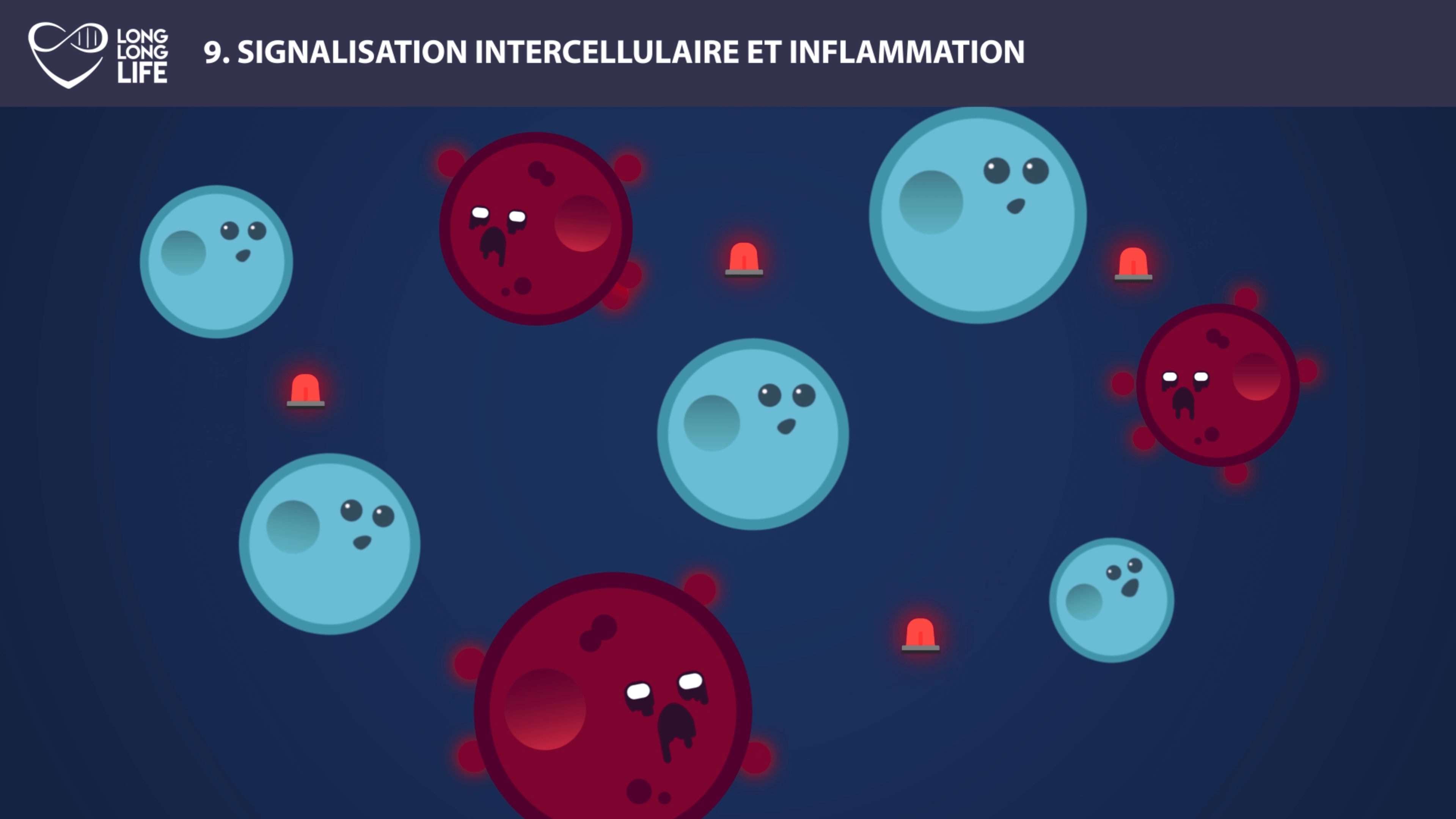
![[Video] The 9 Hallmarks of Aging, Episode 9, Inflammation [FINAL] – with Guilhem Velvé Casquillas PhD](https://www.longlonglife.org/wp-content/uploads/2019/05/Inflammation-Long-Long-Life-longévité-vieillissement-transhumisme-inflammaging-1-218x150.png)
![[Video] The 9 Causes of Aging, Episode 8, Stem Cells – with Dr. Guilhem Velvé Casquillas cellules souches long long life transhumanisme longévité vieillissement arcade](https://www.longlonglife.org/wp-content/uploads/2019/05/cellules-souches-long-long-life-transhumanisme-longévité-vieillissement-arcade-218x150.png)
![[Video] – The 9 Causes of Aging, Episode 7, Senescence – with Dr. Guilhem Velvé Casquillas sénescence long long life longévité transhumanisme vieillissement cellules sénescentes](https://www.longlonglife.org/wp-content/uploads/2019/05/sénescence-long-long-life-longévité-transhumanisme-vieillissement-cellules-sénescentes-1-218x150.png)
![[Video] – The 9 Causes of Aging, Episode 6, Nutrient Detection – with Dr. Guilhem Velvé Casquillas nutriments 1 long long life transhumanisme longévité vieillissement](https://www.longlonglife.org/wp-content/uploads/2019/05/nutriments-1-long-long-life-transhumanisme-longévité-vieillissement-218x150.png)
![[Video] The 9 Hallmarks of Aging, Episode 5, Mitochondria – with Dr. Guilhem Velvé Casquillas mitochondria long long life longevity transhumanism aging free radicals (2)](https://www.longlonglife.org/wp-content/uploads/2019/07/mitochondria-long-long-life-longevity-transhumanism-aging-free-radicals-2-218x150.png)
![[Video] Eurosymposium on Healthy Ageing, Brussels, 2018 Eurosymposium on Healthy Aging](https://www.longlonglife.org/wp-content/uploads/2019/07/P1310252-218x150.jpg)
![[Video] The 9 Causes of Aging, Episode 4, Poorly Folded Proteins – with Dr. Guilhem Velvé Casquillas protéine long long life 9 causes du vieillissement longévité transhumanisme](https://www.longlonglife.org/wp-content/uploads/2019/05/protéine-long-long-life-9-causes-du-vieillissement-longévité-transhumanisme-218x150.png)

![[Video] The 9 Hallmarks of Aging, Episode 2, Telomere shortening – Guilhem Velvé Casquillas, PhD Télomère - Long Long Life 9 causes du vieillissement longévité transhumanisme](https://www.longlonglife.org/wp-content/uploads/2019/06/Télomère-Long-Long-Life-9-causes-du-vieillissement-longévité-transhumanisme-1-218x150.png)
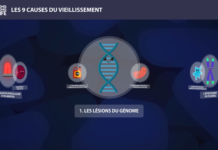

![[Video] The 9 Causes of Aging, Episode 4, Poorly Folded Proteins – with Dr. Guilhem Velvé Casquillas protéine long long life 9 causes du vieillissement longévité transhumanisme](https://www.longlonglife.org/wp-content/uploads/2019/05/protéine-long-long-life-9-causes-du-vieillissement-longévité-transhumanisme-324x160.png)
![[Video] The 9 Causes of Aging, Episode 8, Stem Cells – with Dr. Guilhem Velvé Casquillas cellules souches long long life transhumanisme longévité vieillissement arcade](https://www.longlonglife.org/wp-content/uploads/2019/05/cellules-souches-long-long-life-transhumanisme-longévité-vieillissement-arcade-324x160.png)